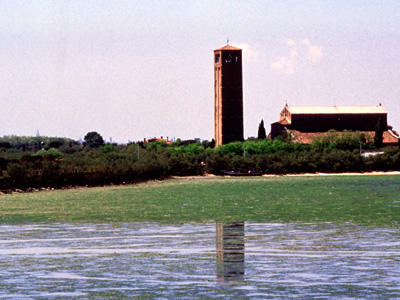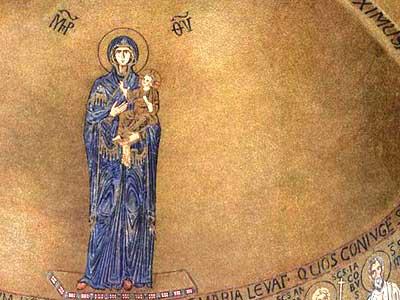Basilica of Santa Maria Assunta
Background
Torcello, an island at the northern end of the Venetian Lagoon, is home to the Cathedral of Santa Maria Assunta, established in 639 according to the wishes of the Byzantine Emperor Heraclius and the Exarch of Ravenna. An inscription at the site, dating from the cathedral’s founding, is considered the oldest known document in Venetian history. The church was expanded and renovated on several occasions over the centuries, reaching its current size in the 11th century, during the tenure of Bishop Orso Orseolo, son of the Venetian Doge. The cathedral also became home to a series of elaborate Byzantine wall mosaics during the 11th century. These include the Virgin and Child, located in the apse, and the Last Judgment, on the entrance wall. The cathedral’s polychrome marquetry and its ceiling, constructed with exposed wooden tie-beams, are two striking features for which the building is known.
How We Helped
WMF’s work at the Cathedral of Santa Maria Assunta in Torcello largely focused on conservation of the site’s unique but steadily degrading tile work, which suffered from problems associated with exposure to groundwater, humidity, and large quantities of soluble salts. Early studies revealed tesserae pieces separating from their mortar beds, and mortar separating in a similar fashion from its masonry wall foundations. Tiles, exposed to humidity, also suffered from corrosion, discoloration, and detachment. With the International Torcello Committee, a group formed in 1978 as a consolidation of various private committees working in Venice, WMF oversaw continued studies of salt and water content in and underneath the basilica walls, and measured the extent of mosaic detachment from building foundations. Working off information from those investigations, conservationists injected a mixture of lime, marble dust, brick powder, water, and resin into the shifted walls, stabilizing the tesserae and their mortar bases, and finally allowing a full restoration of the mosaics.
Why It Matters
WMF’s work at Santa Maria Assunta resulted in the preservation of some of Venice’s oldest and finest mosaics, at a site that had remained largely neglected in the 20th century. Conservation efforts at Torcello yielded new developments in the wider practice of mosaic conservation: on-site conservationists, respecting the delicacy of the nearly millennia-old tesserae, pioneered new strategies for in situ analysis and restoration of structurally fragile mosaics. The new methodology, tested successfully at Torcello, has had a lasting, positive effect on the field, magnifying the substantial benefits of WMF’s work at the site.





